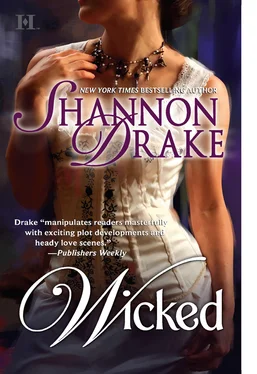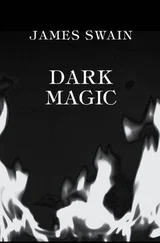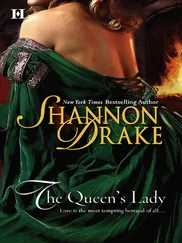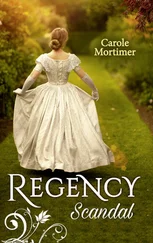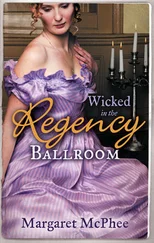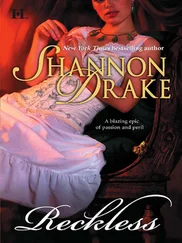“Well, Sir John, thank you. But I hardly think that I’ve had much of an influence upon the man. We’re not at all well acquainted.”
“But he wishes you to attend the gala fund-raiser with him!”
“Yes,” she murmured. She refrained from telling Sir John that it had nothing to do with the fact that he looked forward to her company.
Sir John frowned. “Camille, are you aware that this man is the Earl of Carlyle? Frankly, I’m flabbergasted that a man with such a pedigree would deign to ask a commoner anywhere. No insult intended, my child. It’s just that…well, we English do have our society.”
“Hmm. Well, as we’ve all agreed, it is the age of enlightenment, is it not?”
“An earl, Miss Montgomery. Even with his face hideously scarred, such a thing is unheard of!”
The man was not intentionally being cruel, but he continued to stare at her, and she felt as if she had grown some strange appendage. She was in no position to explain that she sincerely doubted the Earl of Carlyle had revitalized his interest in the museum, aside from continuing his quest to find the presumed murderer of his parents. And it didn’t matter a whit to him whether she was noble or as common as dirt, as long as she served his purpose.
“Are you afraid of the man? Because of the scarring, or even his reputation?” Sir John demanded.
“No.”
“You are not repulsed.”
“A man’s manner and conviction in life can be far uglier than his face, Sir John.”
“Well-spoken, Camille!” he applauded, beaming. “Come along, then! We’ve work to do. As you are transcribing, I’ll be happy to tell you more about the find they made. Naturally, the tombs of pharaohs are thought to have been the most magnificent. But sadly, most of those were plundered long ago. The very great thing about the Stirlings’ discovery of the tomb of Nefershut is that, though the man was a high priest, he was regarded with awe, was wealthier than Midas, and his tomb had not been disturbed. And so many were buried with the man. The Egyptians did not require that a great man’s wives and concubines be buried with him, yet look at this array of sarcophagi! And then there was the matter of the curse.” He waved a hand impatiently in the air. “Apparently, according to popular belief, no tomb discovered can be without a curse. A love of the mysterious, perhaps. We have opened many tombs with no severe warnings at the entry. But in this particular instance—as in some others—there was a curse just inside the tomb. ‘Let he who disturbs the New Life of the blessed one be cursed upon this earth.’ And sadly, the Lord and Lady Stirling died.”
“Did anyone else associated with the dig die?” Camille asked.
Sir John slowly arched a brow with something of a troubled countenance. “I…I don’t know. Certainly no one of the renown of the Stirlings.”
Camille started to turn, thinking she had heard a scraping sound just behind her, where the mummies and their sarcophagi lay.
“Camille! Are you listening to me?” Sir John demanded.
She was amazed that she had been so easily distracted. And it was evident that Sir John hadn’t heard any kind of noise. She was afraid that she was beginning to hear things—taking the small-scale drama that had suddenly invaded her life to greater heights. She loved ancient Egyptian history and all the stories that went with it, but thus far, she had never fallen victim to silly romanticism. She didn’t believe that mummies would rise from their tombs to stalk the living.
“I’m sorry. I thought I heard something.”
“Camille. We’re in a museum. Many people are walking over our heads.”
She smiled. “No, I thought I heard someone in here.”
He sighed with exasperation. “Do you see anyone?”
“No. I just—”
“There are others with keys to the vaults, Camille. We are not the only department in the museum!”
He sounded indignant, and she realized that he was angry he didn’t have her full attention on a very important topic.
“Asps! Camille. Dangerous creatures. Anyone who ventures into Egypt is aware of certain dangers. Though heaven knows, the common tourist is forever traveling down the Nile these days.”
She smiled and refrained from suggesting that everyone had the right to travel, to study, to marvel at the wonders of an ancient world. Even commoners.
“But,” Camille pointed out, “if someone saw to it that the asps were in Lord and Lady Stirling’s apartments, wouldn’t that suggest murder?”
Sir John appeared alarmed. His frown deepened and he looked around quickly, as if afraid they had been followed. He shook his head. “Don’t even think such an idea!” he warned.
“Surely, that is what the current earl must believe.”
He shook his head vehemently. “No! And you mustn’t spread such a suggestion. You mustn’t ever speak such a horrible idea aloud again, Camille. Ever!” He really appeared unnerved. He turned, heading out, but when she didn’t follow quickly enough, he looked back. “Come, come. We’ve used up quite enough time!”
She followed him, sorry that she had voiced her opinion. But one thing was quite certain. She’d be giving her work more painstaking care in the future, now that she knew more about the man, the curse and the find.
“Hurry!” Sir John said, looking back impatiently to assure himself that she was close behind.
“Yes, of course, Sir John,” she replied, hastening her steps.
The museum was already filled with people. She heard different accents—British, Irish and from farther afield—and she was delighted, as always, to see that the museum was well visited.
She loved the museum. It was, she thought, a crowning jewel of England. It had opened to the public on January 15, 1859. At the time, it had been an entirely new kind of institution, governed by a body of trustees responsible to Parliament, with its vast collections belonging to the people. Admission was free, thus, it had been a place she had come as a small child, her hand held safely in the gentle clasp of her mother’s fingers. Her own department was now known as the Department of Egyptian and Assyrian Antiquities, and they had Napoleon Bonaparte to thank for some of their finest pieces, since he, in his attempt at world conquest, had been the first to go into Egypt with scholars and historians. The British defeat of Napoleon had brought the majority of his collections to the British Museum.
As they walked, they passed the Rosetta Stone, the incredible find that had allowed for the translation of the ancient Egyptian hieroglyphs.
Continuing through one of the Egyptian halls, she heard a young boy ask his father, “Papa, why do they do it? I don’t understand why it’s all right to dig up the dead, just because they’ve been dead a long time. Aren’t the people afraid when they dig up mummies?”
“Yes, dear, why is it all right to dig up the dead?” the boy’s mother asked. She was pretty, dressed in a handsome muslin day dress and wearing a pert and fashionable bonnet.
“Darling, we’ve moved many of our own, far more recent dead!” the husband replied. He, too, was in high fashion with his gray hat and jacket. “Honestly! The church cemeteries throughout much of our country are defiled in my opinion! Restoration! That’s what they call the projects. Why, in the ‘restoration’ of Salisbury Cathedral all of the gravestones were moved. It’s indecent, I say. Restoration! Bah. But these fellows…the mummies, well, they weren’t of the church, son,” the father replied.
Though she agreed with the man that much of the current “restoration” of historical sites seemed sadly careless of those who had gone before them in their own country, Camille was tempted to stay behind and offer the boy a far different answer regarding the fact that they should respect all countries and beliefs. She might have told the boy about the brilliance of ancient Egyptian engineering, but her duties did not include acting as a tour guide. Pity! She did so enjoy her subject, and would dearly love to be a guide if she were allowed to do so. Then again, she wasn’t a scholar, had never been on a dig and was rather certain she was lucky to be tolerated as it was.
Читать дальше
